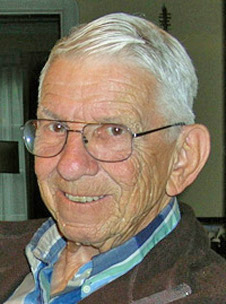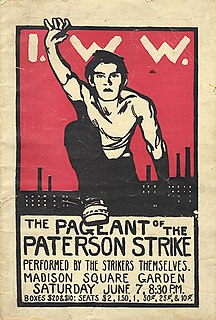Related Research Articles
Social history, often called the new social history, is a field of history that looks at the lived experience of the past. In its "golden age" it was a major growth field in the 1960s and 1970s among scholars, and still is well represented in history departments in Britain, Canada, France, Germany, and the United States. In the two decades from 1975 to 1995, the proportion of professors of history in American universities identifying with social history rose from 31% to 41%, while the proportion of political historians fell from 40% to 30%. In the history departments of British and Irish universities in 2014, of the 3410 faculty members reporting, 878 (26%) identified themselves with social history while political history came next with 841 (25%).

John Lewis Gaddis is the Robert A. Lovett Professor of Military and Naval History at Yale University. He is best known for his work on the Cold War and grand strategy, and he has been hailed as the "Dean of Cold War Historians" by The New York Times. Gaddis is also the official biographer of the seminal 20th-century American statesman George F. Kennan. George F. Kennan: An American Life (2011), his biography of Kennan, won the 2012 Pulitzer Prize for Biography or Autobiography.
Labor history or labour history is a sub-discipline of social history which specialises on the history of the working classes and the labor movement. Labor historians may concern themselves with issues of gender, race, ethnicity and other factors besides class but chiefly focus on urban or industrial societies which distinguishes it from rural history.

The first five-year plan of the Union of Soviet Socialist Republics (USSR) was a list of economic goals, created by Communist Party General Secretary Joseph Stalin, based on his policy of Socialism in One Country. The plan was implemented in 1928 and took effect until 1932.
These are References for Labor unions in the United States.
Melvyn Dubofsky is professor emeritus of history and sociology, and a well-known labor historian. He is Bartle Distinguished Professor of History and Sociology at the Binghamton University.
Gabriel Morris Kolko was an American historian. His research interests included American capitalism and political history, the Progressive Era, and U.S. foreign policy in the 20th century. One of the best-known revisionist historians to write about the Cold War, he had also been credited as "an incisive critic of the Progressive Era and its relationship to the American empire." U.S. historian Paul Buhle summarized Kolko's career when he described him as "a major theorist of what came to be called Corporate Liberalism...[and] a very major historian of the Vietnam War and its assorted war crimes."

As soon as the term "Cold War" was popularized to refer to postwar tensions between the United States and the Soviet Union, interpreting the course and origins of the conflict became a source of heated controversy among historians, political scientists and journalists. In particular, historians have sharply disagreed as to who was responsible for the breakdown of Soviet Union–United States relations after the World War II and whether the conflict between the two superpowers was inevitable, or could have been avoided. Historians have also disagreed on what exactly the Cold War was, what the sources of the conflict were and how to disentangle patterns of action and reaction between the two sides. While the explanations of the origins of the conflict in academic discussions are complex and diverse, several general schools of thought on the subject can be identified. Historians commonly speak of three differing approaches to the study of the Cold War: "orthodox" accounts, "revisionism" and "post-revisionism". However, much of the historiography on the Cold War weaves together two or even all three of these broad categories and more recent scholars have tended to address issues that transcend the concerns of all three schools.

Charles Grier Sellers is an American historian best known for his book The Market Revolution: Jacksonian America, 1815-1846, which offers a new interpretation of the economic, social, and political events taking place during the US's Market Revolution.

Ehud R. Toledano is professor of Middle East history at Tel Aviv University and the current director of the Program in Ottoman & Turkish Studies. His areas of specialization are Ottoman history, and socio-cultural history of the modern Middle East.

The Haymarket Tragedy is a 1984 history book by Paul Avrich about the Haymarket affair and the resulting trial.

Anarchist Portraits is a 1988 history book by Paul Avrich about the lives and personalities of multiple prominent and inconspicuous anarchists.
Jennifer Lucy Hochschild is a political scientist. She serves as the Henry LaBarre Jayne Professor of Government, Professor of African and African American Studies and Harvard College Professor at Harvard University. She is also a member of the faculty at Harvard's Graduate School of Education and John F. Kennedy School of Government.
Tera Hunter is an American scholar of African-American history and gender. She holds the Edwards Professor of American History Endowed Chair at Princeton University. She specializes in the study of gender, race, and labor in the history of the Southern United States.

This is a select bibliography of post World War II English language books and journal articles about Stalinism and the Stalinist era of Soviet history. Book entries have references to journal reviews about them when helpful and available.
Foster Rhea Dulles was an American journalist, history professor, and author of a number of books. He specialized in American political and cultural relations with the Far East and advocated internationalism as opposed to American isolationism. The diplomats John Foster Dulles and Allen Dulles were his cousins.
Eric D. Weitz is Distinguished Professor of History at City University of New York, and author of several books.

The Paterson pageant was a dramatic depiction of the 1913 Paterson silk strike acted by the strikers themselves in New York City's Madison Square Garden while the strike was ongoing. Staged by John Reed and other bohemians of Greenwich Village, the pageant played before a full audience and received positive reviews, though its public support and sympathy did not translate into success for the six-month strike, which crumbled following the pageant. One of the Wobbly leaders behind the strike, Elizabeth Gurley Flynn, credited the pageant with hastening strike's end, having split the strikers' attention from their primary cause.
We Shall Be All: A History of the Industrial Workers of the World is a 1969 history book about the Industrial Workers of the World by Melvyn Dubofsky.
References
Footnotes
- ↑ See Rogin 2002.
Bibliography
- Brody, David (1979). "The Old Labor History and the New: In Search of an American Working Class". Labor History. 20 (1): 111–126. doi:10.1080/00236567908584522. ISSN 1469-9702.
- ——— (1993). "Reconciling the Old Labor History and the New". Pacific Historical Review. 62 (1): 1–18. doi:10.2307/3640520. ISSN 1533-8584. JSTOR 3640520.
- Buhle, Mari Jo; Buhle, Paul (1988). "The New Labor History at the Cultural Crossroads". Journal of American History. 75 (1): 151–157. doi:10.2307/1889661. ISSN 1945-2314. JSTOR 1889661.
- Dubofsky, Melvyn (1977). "The 'New' Labor History: Achievements and Failures". Reviews in American History. 5 (2): 249–254. doi:10.2307/2701638. ISSN 1080-6628.
- Fink, Leon (1988). "The New Labor History and the Powers of Historical Pessimism: Consensus, Hegemony, and the Case of the Knights of Labor". Journal of American History. 75 (1): 115–136. doi:10.2307/1889657. ISSN 1945-2314. JSTOR 1889657.
- Gerstle, Gary (2002). "Preface to the Princeton Edition". Working-Class Americanism: The Politics of Labor in a Textile City, 1914–1960. Princeton, New Jersey: Princeton University Press. pp. xi–xxiv. ISBN 978-0-691-08911-9.
- Kimeldorf, Howard (1991). "Bringing the Unions Back in (or Why We Need a New Old labor History)". Labor History. 32 (1): 91–129. doi:10.1080/00236569100890041. hdl: 2027.42/51181 . ISSN 1469-9702.
- Kuhn, James W.; Lewin, David; McNulty, Paul J. (1983). "Neil W. Chamberlain: A Retrospective Analysis of His Scholarly Work and Influence". British Journal of Industrial Relations. 21 (2): 143–160. doi:10.1111/j.1467-8543.1983.tb00127.x. ISSN 1467-8543.
- Painter, Nell Irvin (1989). "The New Labor History and the Historical Moment" (PDF). International Journal of Politics, Culture, and Society. 2 (3): 367–370. Retrieved 26 May 2021.
- Rogin, Michael (2002). "How the Working Class Saved Capitalism: The New Labor History and The Devil and Miss Jones". Journal of American History. 89 (1): 87–114. doi:10.2307/2700785. ISSN 1945-2314. JSTOR 2700785.